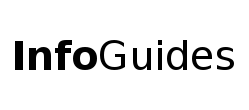
 | University Libraries
| University Libraries
Thank you to and Tulane University librarians and Brandi Tuttle, Duke University Medical Center Library & Archives for allowing me to use some information from their guides.
Home - Scholarly Impact Research Guide - Library Guides at Tulane University and
Getting Started - Publication Metrics - LibGuides at Duke University Medical Center
Things to Consider & Limitations
There are very clear limitations to using the different types of metrics currently produced and used. Some of the limitations to the traditional metrics are as follows:
Sources differ by disciplinary norms.
Finding Journal Impact Factor: The impact factor of a journal is calculated by dividing the number of current year citations to the source items published in that journal during the previous two years.
JCR tutorial https://www.youtube.com/watch?v=VJc3PC697oc
Journal Citation Reports: Learn the Basics http://clarivate.libguides.com/jcr
Other metrics in Journal Citation Reports:
H-index (also called the Hirsch Index) was developed by a physicist to measure impact & productivity of a researcher. The formula uses number of papers and number of citing references per paper to calculate a score: It is the sum of the Times Cited divided by the number of results found. It is the most commonly used author-level metric, but others exist to account for different cases (e.g. co-authorship). It is designed to measure the overall strength of publication citations over a career and is most commonly used in STEM disciplines. Calculations rely on available publications and citations.
There are many other variations, including:
Books and Book Chapters: Citations are available via Google Scholar. Qualitative-based evaluations
Creative Works: Impact is often qualitative, such as visual or performing arts. Factors to consider include:
Publisher Websites

Compute your h-index
Use Web of Science to find your h-index. Example from the Citation Report:

Use Google Scholar to find your h-index. Example from Google Scholar profile:

Stories can be equally impactful to complement contextualized metrics.
Google searches can help to identify evidence not otherwise covered by metrics
Altmetrics can help match metrics with potential audiences
Ask a Librarian | Hours & Directions | Mason Libraries Home
Copyright © George Mason University